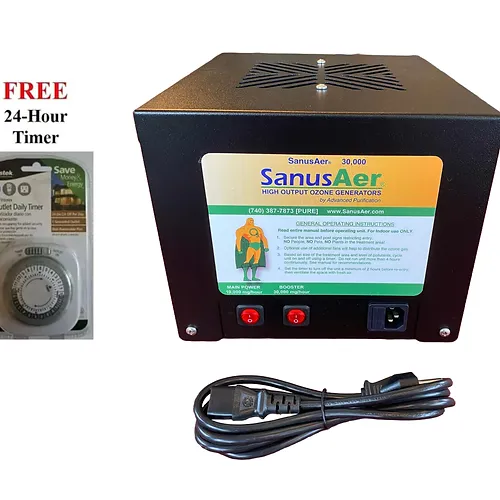In the world of networking, the need to bridge different types of communication systems is increasingly common. One crucial device that facilitates this integration is the Ethernet to E1 converter. This tool plays a significant role in connecting Ethernet To E1 Converter Supplier, which are widely used in digital telecommunications. This article provides a thorough overview of Ethernet to E1 converters, including their functionality, benefits, common uses, and key considerations for selection.
1. What is an Ethernet to E1 Converter?
An Ethernet to E1 converter is a specialized device that translates Ethernet network signals into E1 format and vice versa. Ethernet is the standard technology for local area networks (LANs) that supports high-speed data transfer, while E1 is part of the E-carrier system used primarily for voice and data transmission over telecommunications networks.
The converter enables Ethernet data to be transmitted over E1 lines, allowing for the expansion and integration of Ethernet networks through existing E1 infrastructure. This is particularly valuable in situations where new Ethernet cabling is not feasible but E1 lines are available.
2. Key Features of Ethernet to E1 Converters
Ethernet to E1 converters come with a range of features designed to ensure effective and reliable communication between different network types:
- Signal Conversion: The core function of the converter is to convert Ethernet data frames into E1 signals and vice versa. This involves encoding Ethernet packets into the E1 format suitable for transmission over E1 lines.
- Data Rate Support: Most converters support standard E1 data rates of 2 Mbps. Some advanced models can handle higher data rates or multiple E1 channels to accommodate larger volumes of data.
- Protocol Compatibility: Many converters support various Ethernet protocols, such as Ethernet over IP (Internet Protocol) or Ethernet over ATM (Asynchronous Transfer Mode), offering versatility in different network environments.
- Error Handling: Includes features for error detection and correction to ensure data integrity during transmission. This helps in maintaining the quality of data transfer over potentially unreliable E1 lines.
- Management Interfaces: Some converters are equipped with management tools like web-based interfaces or SNMP (Simple Network Management Protocol) for easy configuration, monitoring, and troubleshooting.
- Physical Connectivity: Provides standard connectors for Ethernet (typically RJ-45 or fiber optic) and E1 (commonly RJ-45 or BNC), ensuring compatibility with a wide range of network equipment.
3. Benefits of Ethernet to E1 Converters
Using an Ethernet to E1 converter offers several advantages:
- Seamless Integration: Allows Ethernet networks to be extended over existing E1 infrastructure, enabling connectivity without the need for new cabling.
- Cost Savings: Leverages existing E1 lines, which can be more cost-effective than deploying new Ethernet infrastructure, particularly in remote or underserved areas.
- Extended Coverage: E1 lines can cover longer distances than Ethernet cables, making converters ideal for extending Ethernet connectivity over greater distances.
- Enhanced Flexibility: Bridges different networking technologies, providing flexibility in network design and deployment to meet various operational needs.
4. Applications of Ethernet to E1 Converters
Ethernet to E1 converters are used in various scenarios, including:
- Telecommunications: Integrate Ethernet services with E1-based telecom systems, allowing for the delivery of Ethernet data over traditional E1 lines.
- Remote and Rural Areas: Enable Ethernet connectivity in locations where E1 lines are available but Ethernet infrastructure is not, facilitating internet access and data services in remote areas.
- Legacy System Integration: Modernize and extend the functionality of legacy E1 systems by integrating them with newer Ethernet technologies.
- Network Expansion: Use converters to bridge Ethernet and E1 networks, enabling the expansion of network capabilities across different types of infrastructure.
5. Considerations for Choosing an Ethernet to E1 Converter
When selecting an Ethernet to E1 converter, consider the following factors:
- Compatibility: Ensure that the converter supports the Ethernet and E1 protocols used in your network. Verify compatibility with existing network equipment and infrastructure.
- Data Rate Requirements: Choose a converter that supports the required data rate for your application. Some converters may offer higher data rates or support multiple E1 channels for increased bandwidth.
- Management Features: Determine if you need advanced management capabilities such as remote configuration, monitoring, and diagnostics. These features can simplify device management and improve operational efficiency.
- Reliability and Support: Select a converter from a reputable manufacturer known for reliability and quality. Consider the availability of technical support and warranty options for added assurance.
- Cost: Evaluate the cost of the converter in relation to its features and benefits. While cost is a factor, it should be balanced with the performance and functionality required for your specific application.
6. Maintenance and Troubleshooting
To ensure the continued performance of your Ethernet to E1 converter, follow these maintenance and troubleshooting tips:
- Routine Checks: Regularly inspect the device for physical damage and ensure that all connections are secure. Regular maintenance helps prevent potential issues.
- Firmware Updates: Keep the device’s firmware updated to access the latest features and security enhancements.
- Performance Monitoring: Use management tools to monitor the converter’s performance and detect any issues such as signal degradation or connectivity problems.
- Troubleshooting: If issues arise, consult the device’s documentation for troubleshooting guidance. Common problems may include configuration errors, signal loss, and compatibility issues.
Conclusion
Ethernet to E1 converters are essential tools for bridging the gap between modern Ethernet networks and traditional E1 telecommunications lines. They offer valuable benefits such as cost savings, extended coverage, and flexible network integration. By understanding their features, advantages, and key considerations, you can make an informed decision when selecting a converter to meet your networking needs and ensure effective communication across different technologies.
